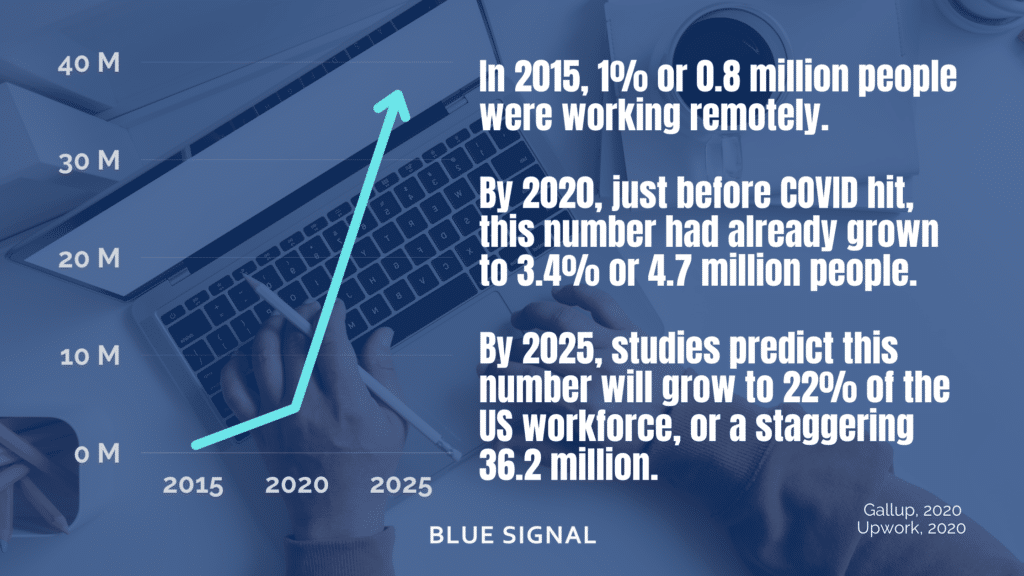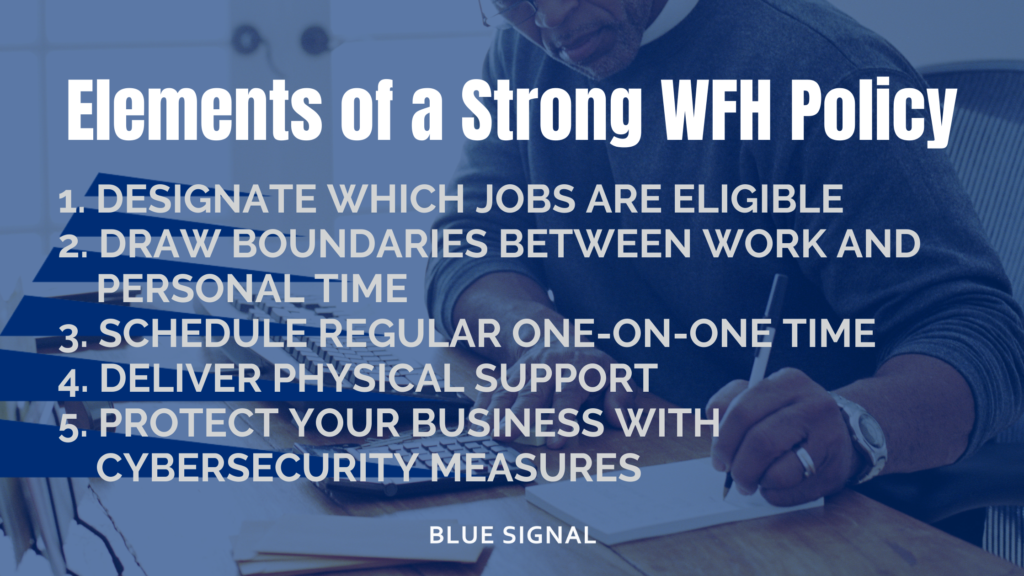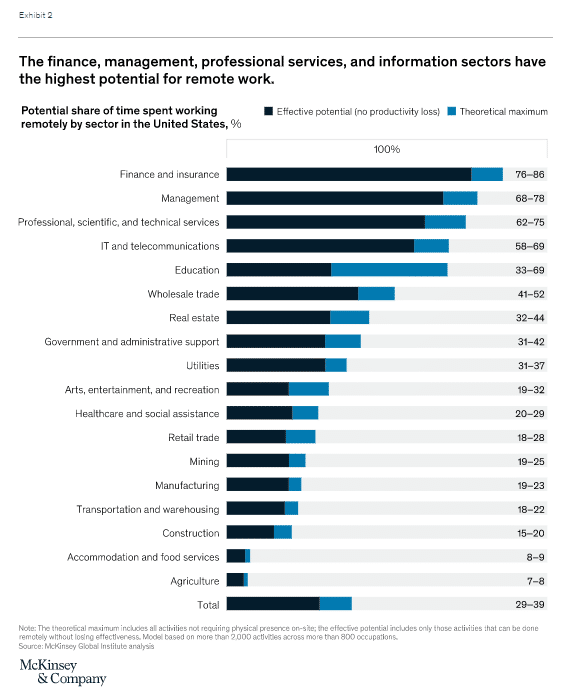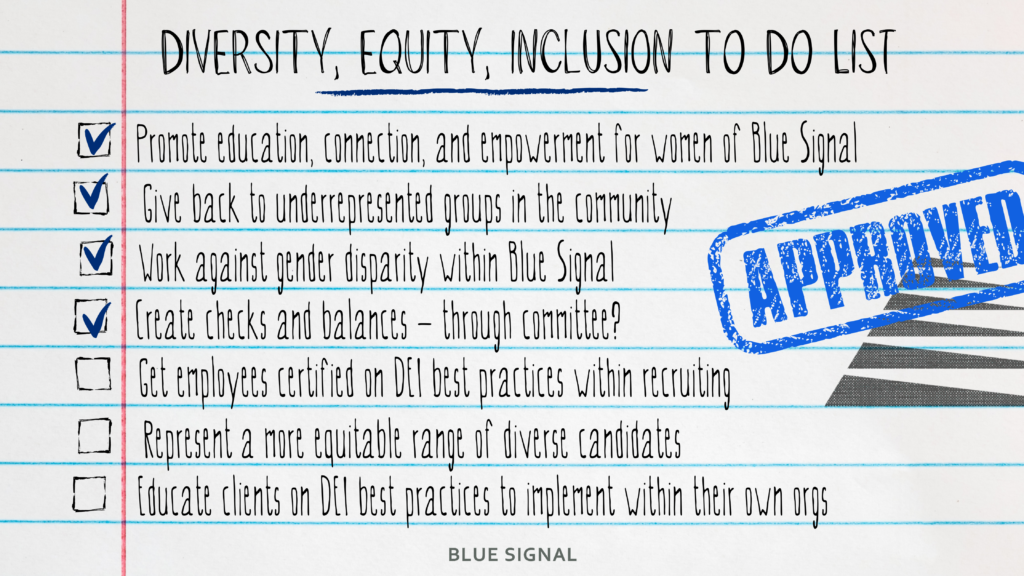Recent economic changes have influenced businesses to adapt and create alternative working methods. Whilst healing from deep Covid pandemic scars, employers dodged redundancies and attrition through adopting remote working conditions. Even pre-pandemic, remote working has influenced a wide variety of impacts for businesses on a global scale.
Beyond safety benefits like social distancing, remote workers gain comfort from flexible working conditions, zero-commuting strains, and a more stable work-life balance. In turn, this has increased business performance, productivity, and created opportunities for savings on infrastructure and maintenance costs.
Whether on-site or off-site, employers hold responsibility for workers health, safety, and wellbeing. Through proper support, allowing employees to work remotely can increase their sense of value and engagement – resulting in improved employee retention for your business.
What is a Remote Worker?
A remote worker is an employee who works outside of the traditional workplace. The basis of their job conditions allows them to work remotely – either permanently, temporarily, or on a hybrid basis where time is split in and out of office. Customer service, sales, engineering, and most computer-based jobs are common roles that could benefit from remote working conditions.
Newly developed communication tech like VoIP and cloud systems enable this remote workforce to accomplish all the same tasks as they would in a traditional office setting. With productivity remaining consistent in these fields, the appeal of remote working is on the rise.
Remote work is nothing new. Even prior to the pandemic, companies were leveraging expertise from geographically diverse candidate pools to help set their companies apart. Research by Global Workplace Analytics found that, since 2015, the number of people who work from home has risen by 140%.

Benefits of Working Remotely
The benefits of hiring remote workers aren’t some big secret. A global talent pool can present a wider range of unique candidates - bringing fresher entrepreneurial talent and business productivity. Research done by PGI found that businesses who introduced remote working options saved $11,000 per worker, per year. In 2015, telecommuting saved employers $44 billion! Not to mention drops in unscheduled absences, transit subsidies, janitorial services for facilities, and much more. Imagine the savings you could gain from a workforce made of full-time remote workers!
However the benefits are so much more than just financial gains. Harvard Business Review found that remote workers were more productive, more willing to work overtime, and most likely to stay working for a business longer than colleagues who worked in-office. One study by Prodoscore found that “on average, those who work from home spend 10 minutes less a day being unproductive, work one more day a week, and are 47% more productive.” Contrary to popular belief of the opposite, 75% of people who work remotely do so because it provides fewer distractions. 86% of people feel that working remotely reduces stress, according to FlexJobs research. Not to mention, people who work remotely at least once a month were found to be 24% more happy and productive than those who didn’t. The math is simple: happy workers = retained workers.
Developing a Strong Work from Home Policy
You’d think that with so many benefits, it’d be hard to justify not going remote. People tend to hold onto tradition, but even beyond that, there are some concerns employers struggle with when making the decision to shift to telework. This includes possible loss of productivity due to distractions like kids and housework, detachment from co-workers resulting in communication issues, and effects on employee wellbeing like feelings of loneliness or isolation. The trick to avoiding these pitfalls is to establish a strong work from home policy early on.

Good remote work policies should support both new hires and employees transitioning to remote working by making all employees aware of resources, entitlements, and benefits. Simply offering work from home options isn’t enough. If you want to leverage remote work as a retention tactic, you need a strong base for it. Some things to consider in developing a telework policy for your own company can include the following.
1. Designate which Jobs are Eligible
In order to properly consider which roles can be fulfilled remotely, look at the responsibilities and requirements of each role and decide on job eligibility based on duties, equipment needs, and legal and tax implications. Studies by McKinsey found that finance, management, professional services, and information sectors have the highest potential for remote work. Review the conduct and personality of current employees in these roles and rationalize whether or not they have the personality and drive to conduct their work remotely. Can any improvements be made if the job was done through hybrid working conditions? Leverage your HR team to apply and review proper legal methods to assign these roles the appropriate eligibility.

2. Draw Boundaries between Work and Personal Time
Whilst working under flexible working conditions, it’s likely some remote workers may blur the lines between work and home life. The spectrum can vary widely – from people being absentee from their desks during working hours, to people feeling the need to stay ‘logged on.’ This problematic Catch 22 can cause guilt that keeps employees from taking necessary breaks – resulting in burnout. You’ll need to take the guesswork out of scheduling by setting work agendas with suitable timeframes. Ensure remote workers take regular breaks and cease working at appropriate times. This way, you can extinguish any overworking by setting boundaries.
3. Schedule Regular One-on-One Time
All working relationships should have a comfortable and empathetic atmosphere. Through regular one-on-one meetings, leadership can offer remote workers accessible advice and support. These check-ins stand as great lifelines – particularly for new starters. By getting on a video chat or picking up the phone, you will have the ability to read emotional levels better than you would over email or text. This way, you can pick up on signs of anxiety and work-related stress on a regular basis and address them as soon as they start. Normalize conversations about mental and emotional support and work towards eliminating signs of stress, social anxiety, and burnout.
4. Deliver Physical Support
Employers can offer direct support through ergonomic work equipment. You wouldn’t want to work from your kitchen table long-term, and neither would your employees. 85% of workers want their employers to provide them with the technology they need to work remotely. To meet this market need, try to create work from home spaces as close to office settings as possible. Through keyboard risers, support cushions, gel rests, and maybe even ergonomic chairs, employees will be able to create a space in their remote office locations that is dedicated to work. This practice will increase their productivity and focus, and the supplies will soon pay for themselves.
5. Protect your Business with Cybersecurity Measures
As more of us become accustomed to newer forms of tech innovations and virtual communication, investing in cybersecurity is vital. Online hacking and data breaches aren’t fantastical myths you only hear on the news. Real-life threats can hit your business instantly - and the damage can be long-lasting. Breaches among small businesses can cost up to $3.62 million dollars. To avoid this before it becomes an issue, introduce regulations on cybersecurity measures that all employees must comply with, such as only working on company computers or avoiding public Wi-Fi access. Introduce encryptions, antivirus, or Virtual Private Network (VPN) software for extra safety measures. Additionally, you can hire cybersecurity professionals that are certified in information systems security and/or cloud security to to protect your IT infrastructure and network.
Prior to the pandemic, businesses tended to turn their noses up at the idea of a remote workforce. Repercussions due to the pandemic has inadvertently increased acceptance for hybrid work structures globally, some out of necessity and some out of empathy. Whatever the case, the trend with today’s workers is in favour of more telework options. According to Statista, as many as 40% of employees prefer to work remotely. Even further, 74% of workers said they would quit their current job if they were offered more flexible options elsewhere. In this candidate-driven market, this has become an important negotiating chip in hiring and retaining current employees. To keep with the demand of the market, employers must implement supportive and safe work from home policies. In turn, workers will surely reciprocate the appreciation through performance and loyalty to the business. In this recovering economy, increasing retention rates will make or break the success of many businesses.

